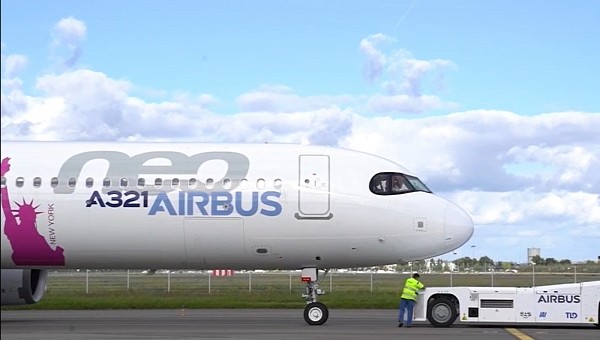Airbus is leading a new European Union co-funded project that’s aiming to contribute to the ultimate goal of zero-emission commercial aviation operations by 2050. With aviation being notoriously difficult to decarbonize, focusing on brand-new propulsion technologies and alternative fuels is not enough.
Albatross and Heron are the names of two of the most interesting birds, in terms of flight abilities and endurance, which is why they also became the names of two large-scale European projects. Albatross was the first one, a two-year project within the Single European Sky ATM Research (SESAR) Program Joint Undertaking.
Heron is its successor, ready to take things to an even bigger level. The main theme continues to be fuel efficiency for commercial aircraft, but this time it will be tackled by 25 participants, from ten countries, with Airbus leading.
In this case, Heron stands for “Highly Efficient gReen OperatioNs,” which says it all – this initiative will research and test multiple ways of improving operations at airports, as well as those during flights, with the single goal of increasing fuel efficiency.
In other words, even existing airliners that run on conventional fuel can have a lower impact on the environment, by switching to certain operational strategies.
For example, standard airliners continue to burn a lot of fuel even when they’re not flying, during typical on-ground operations. Also, because they can spend a lot of time waiting on taxiways, the levels of CO2 emissions related to this go up even more.
It’s easy to see that if aircraft could be taxied with their engines off, and spend as little time as possible waiting, they’d burn less fuel and, therefore, reduce emission levels.
Even air traffic control can play a part in decreasing CO2 emissions. Artificial intelligence is the key element here. With the help of AI, air traffic control systems can improve flight trajectories in order to save more fuel, and send this data in real-time to the aircraft, during flight operations. On a larger scale, a centralized system would be able to send and exchange data within a wider network.
These are just some of the tasks that will be handled within the Heron project. The German Aerospace Center (DLR) has conducted similar research in the past few years. In 2021, it joined forces with Eurocontrol, a European organization for aviation safety, to study contrail prevention.
This concept isn’t linked to fuel efficiency, because it targets non-CO2-emissions, but it’s just as significant for addressing aviation’s impact on climate change. In the end, it’s about finding and implementing multiple ways of making commercial aviation in general cleaner. There are many roads that lead to green flights, including new-generation designs and propulsion systems, and that is a good thing.
Heron is its successor, ready to take things to an even bigger level. The main theme continues to be fuel efficiency for commercial aircraft, but this time it will be tackled by 25 participants, from ten countries, with Airbus leading.
In this case, Heron stands for “Highly Efficient gReen OperatioNs,” which says it all – this initiative will research and test multiple ways of improving operations at airports, as well as those during flights, with the single goal of increasing fuel efficiency.
In other words, even existing airliners that run on conventional fuel can have a lower impact on the environment, by switching to certain operational strategies.
For example, standard airliners continue to burn a lot of fuel even when they’re not flying, during typical on-ground operations. Also, because they can spend a lot of time waiting on taxiways, the levels of CO2 emissions related to this go up even more.
It’s easy to see that if aircraft could be taxied with their engines off, and spend as little time as possible waiting, they’d burn less fuel and, therefore, reduce emission levels.
Even air traffic control can play a part in decreasing CO2 emissions. Artificial intelligence is the key element here. With the help of AI, air traffic control systems can improve flight trajectories in order to save more fuel, and send this data in real-time to the aircraft, during flight operations. On a larger scale, a centralized system would be able to send and exchange data within a wider network.
These are just some of the tasks that will be handled within the Heron project. The German Aerospace Center (DLR) has conducted similar research in the past few years. In 2021, it joined forces with Eurocontrol, a European organization for aviation safety, to study contrail prevention.
This concept isn’t linked to fuel efficiency, because it targets non-CO2-emissions, but it’s just as significant for addressing aviation’s impact on climate change. In the end, it’s about finding and implementing multiple ways of making commercial aviation in general cleaner. There are many roads that lead to green flights, including new-generation designs and propulsion systems, and that is a good thing.






